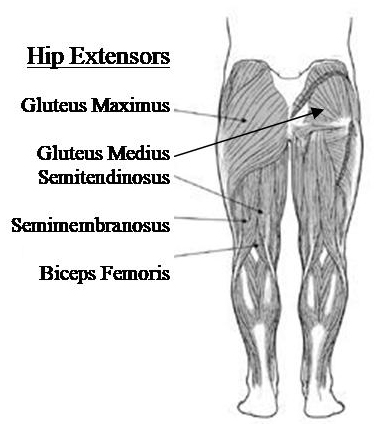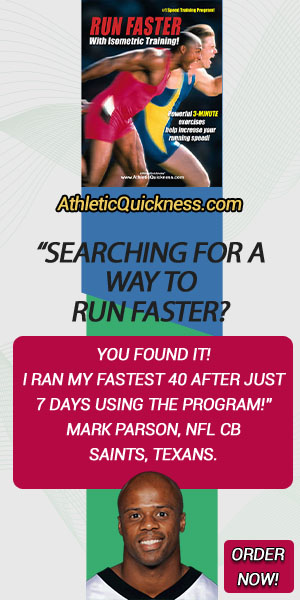Runners and Sprinters Need Strong Glute Muscles!
Every coach and personal trainer certainly knows the importance of glute strength for runners. In fact, I will go so far as to say that the you probably realized this to some degree as early as your middle school days. This is because if you ever played a physical game like football, soccer or basketball, for example, chances are your buttocks were sore afterward and this is exactly where your glute muscles are located. However, if would be unfair to leave out the hamstrings in this discussion since they, along with the glutes, make up what are called the hip extensor muscles and provide for the amazing strength and power necessary for athletes to be successful.
The Hip Extensor Muscles, of which the glutes are a part of are, include: 1) Gluteus Maximus, 2) Gluteus Medius, and the hamstrings, which are 3) semitendinosus, 4) semimembranosus, and 5) biceps femoris long head. These muscles are shown in Figure 1 below:

Figure 1. Hip or Thigh Extensor Muscles.
Function of the Glutes and Hamstrings
The glutes and hamstrings main function is to extend the thigh behind your body. This is a pushing motion that occurs during activities such as sprinting and running as seen by the athlete’s right leg in Figure 2 below.

Figure 2. Glute strength for runners in action, plus, the hamstrings.
Other activities where the thigh is pushing, or extending backward occur during jumping, walking, skating, and swimming. These muscles are usually well developed in athletes since they not only have to carry the weight of their entire bodies, but, they also need to be able to contract aggressively so they can perform at a faster pace.
Exercises for the Glutes and Hamstrings
There is no shortage of exercises that one can do to strengthen their glutes and hamstrings. Squats and deadlifts are among the most popular. Others include running steps, lunges and leg presses. You may even be able to improve your glute strength at home by doing simple deep knee bends.
Innervation, or, Nerve Supply to the Glutes and Hamstrings
The nerve supply to the Gluteus Maximus is supplied by the inferior gluteal nerve. This nerve is formed by branches L5, S1, and S2 from the lumbosacral plexus. The nerve supply to the semitendinosus and semimembranosus muscles is the tibial branch of the sciatic nerve formed from branches L5,S1 and S2. The nerve supply to the biceps femoris long head is the tibial nerve and the short head is the common peroneal nerve. The nerves to these three muscles (collectively known as the hamstrings) are contained within the sciatic nerve and branch to the corresponding muscle. See Figure 2 below for the inferior gluteal nerve and sciatic nerve. See Figure 3 below:

Figure 3. Innervation of the glutes and hamstrings.
Antagonist Muscles of the Glutes and Hamstrings
If we just focus on the action of the glutes and hamstrings being hip extensors, then the hip flexor muscles would be the ones that work opposite of them. However, as you may well know, muscles tend to have more than one function and the glutes and hamstrings are no different and there will be other antagonists to these actions as well. The important to remember is that glute strength for runners is imperative if you ever want to get faster in your sport.






